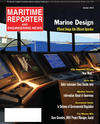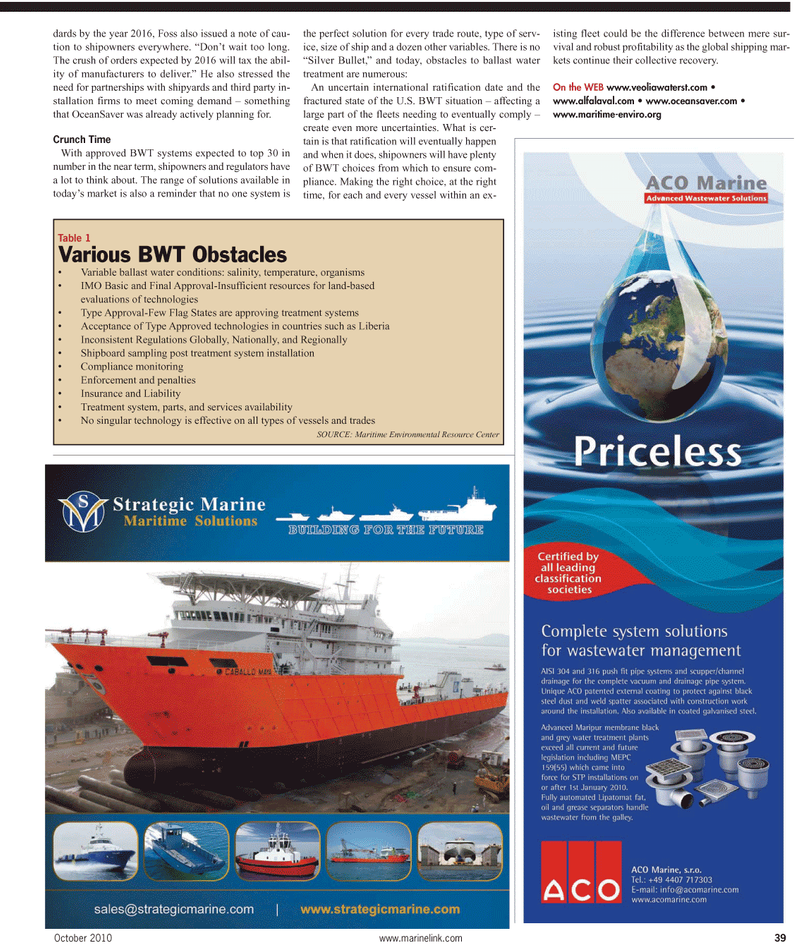
Page 39: of Maritime Reporter Magazine (February 2, 2010)
Read this page in Pdf, Flash or Html5 edition of February 2, 2010 Maritime Reporter Magazine
dards by the year 2016, Foss also issued a note of cau- tion to shipowners everywhere. “Don’t wait too long.
The crush of orders expected by 2016 will tax the abil- ity of manufacturers to deliver.” He also stressed the need for partnerships with shipyards and third party in- stallation firms to meet coming demand – something that OceanSaver was already actively planning for.
Crunch Time
With approved BWT systems expected to top 30 in number in the near term, shipowners and regulators have a lot to think about. The range of solutions available in today’s market is also a reminder that no one system is the perfect solution for every trade route, type of serv- ice, size of ship and a dozen other variables. There is no “Silver Bullet,” and today, obstacles to ballast water treatment are numerous:
An uncertain international ratification date and the fractured state of the U.S. BWT situation – affecting a large part of the fleets needing to eventually comply – create even more uncertainties. What is cer- tain is that ratification will eventually happen and when it does, shipowners will have plenty of BWT choices from which to ensure com- pliance. Making the right choice, at the right time, for each and every vessel within an ex- isting fleet could be the difference between mere sur- vival and robust profitability as the global shipping mar- kets continue their collective recovery.
On the WEB www.veoliawaterst.com • www.alfalaval.com • www.oceansaver.com • www.maritime-enviro.org
Table 1
Various BWT Obstacles • Variable ballast water conditions: salinity, temperature, organisms • IMO Basic and Final Approval-Insufficient resources for land-based evaluations of technologies • Type Approval-Few Flag States are approving treatment systems • Acceptance of Type Approved technologies in countries such as Liberia • Inconsistent Regulations Globally, Nationally, and Regionally • Shipboard sampling post treatment system installation • Compliance monitoring • Enforcement and penalties • Insurance and Liability • Treatment system, parts, and services availability • No singular technology is effective on all types of vessels and trades
SOURCE: Maritime Environmental Resource Center
October 2010 www.marinelink.com 39

 38
38

 40
40
